Let’s refresh our geography on this magical continent… here are a few interesting facts that you may or may not have known…
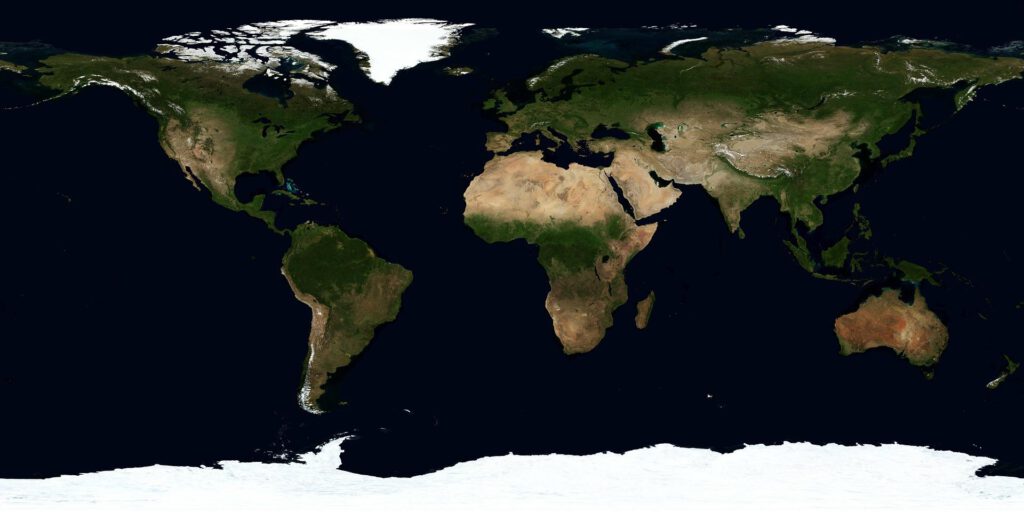
Africa is the 2nd largest continent after Asia and covers 20% of the total land surface of Earth. Even though 25% of Africa is taken up by the Sahara desert, it contributes 33% to global biodiversity with 1 111 mammal species, 2 341 bird species, 3 360 known freshwater fish species and 20% of the earths known reptile species .
Africa is the most centrally located continent in the world. Both the prime meridian (0o longitude) and the equator (0o latitude) run through its core. The majority of Africa lies between the tropics but the extreme north and south are within the temperate zones.
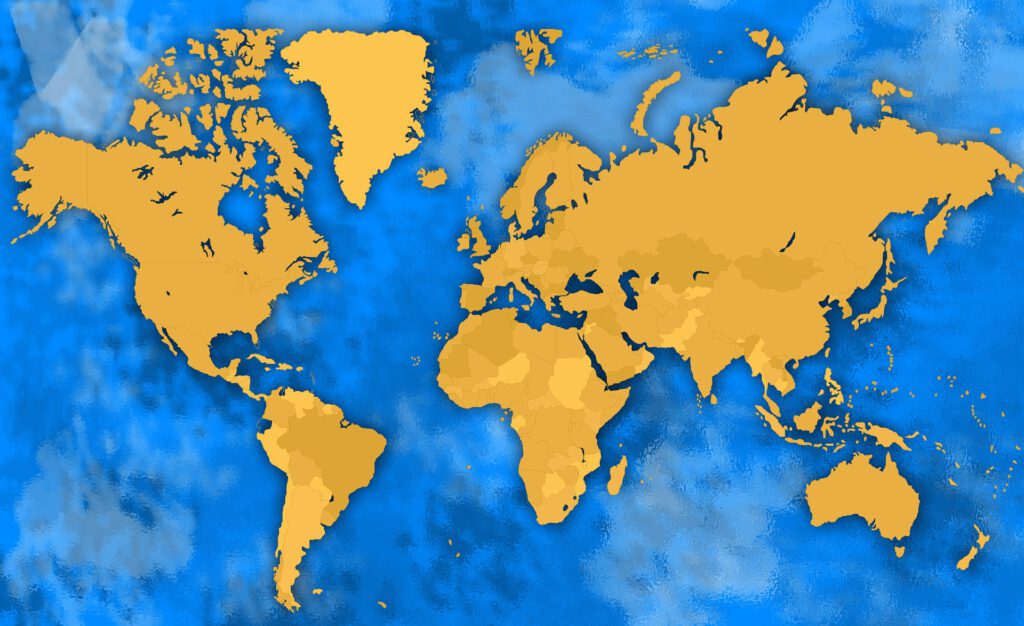
Africa appears relatively small on the world map compared to other continents due to the projection of the Earth’s spherical dimensions onto a rectangular, flat surface. That’s why Africa looks to be the same size as Greenland, when in actual fact it is about 14x larger. It is larger than China, Japan, India, the UK, USA (incl. Alaska) and most of Europe combined. It does however have the shortest coastline of all the continents owing to the fact that many of its beaches are long and straight with very few bays or inlets.
Between 1500 and 2000 languages are spoken in Africa. Swahili is the most widely spoken language and consists of a mix of local Bantu languages and Arabic. South Africa (which is a country in Africa) has 11 official languages. More than 50% of the worlds French speakers live in Africa, and there are more Portuguese speakers in Angola than in Portugal.
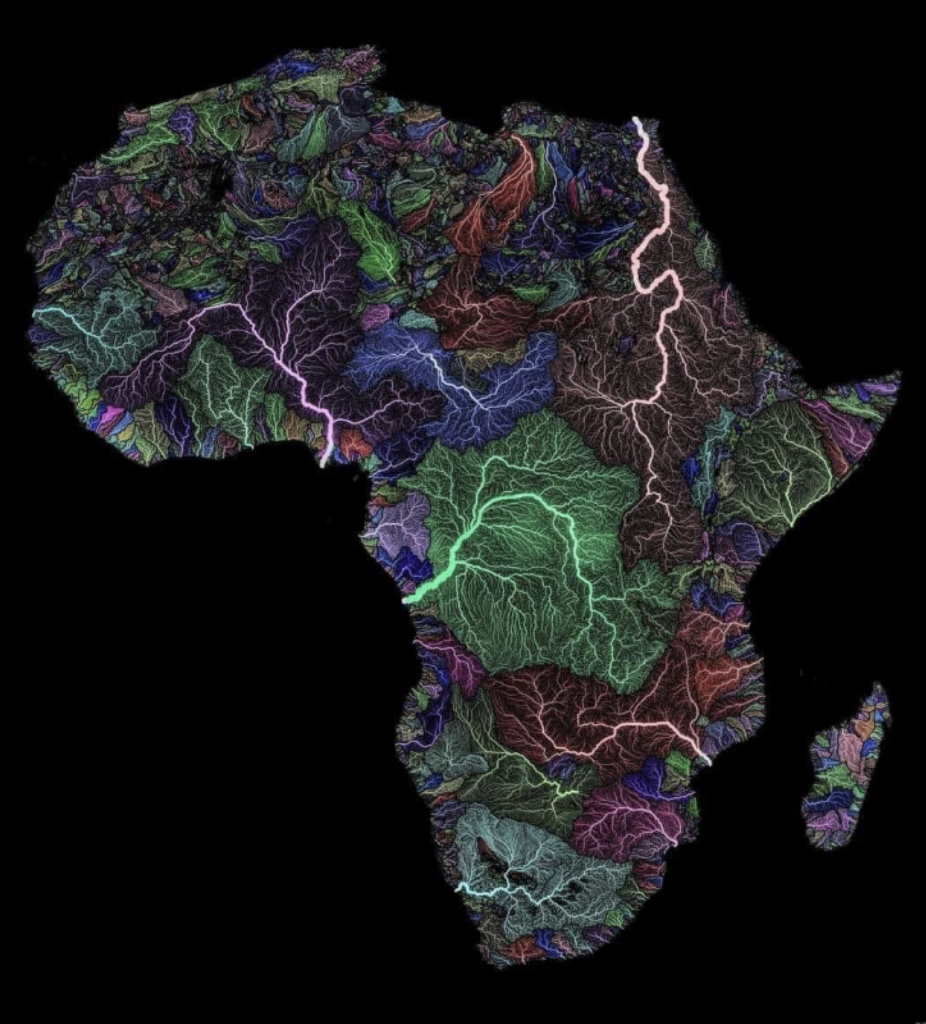
The Nile is the worlds longest river (4 180 miles/ 6690km) with its source in the mountains of Burundi and Rwanda. It flows into lake Victoria, which is the worlds 3rd largest lake and is shared by Kenya, Uganda and Tanzania. (seen in bright pink)
An impressive projection of Africa’s drainage basins by Sheikh Rokon
The Congo river is the deepest river in the world (220m/ 720ft), and the 2nd largest river in the world by discharge volume. The drainage basin of the Congo is 4 000 000km2 or 1 500 000miles2, which is 13% of Africas land mass. (seen in the centre of the image above)
The Niger River is the 3rd longest in Africa (4 200km or 2 600miles). Its source is only 240km or 150miles from the Atlantic Ocean. It flows inland to Timbuktu on the southern fringe of the Sahara, then does an about turn and makes it way towards the Atlantic Ocean.
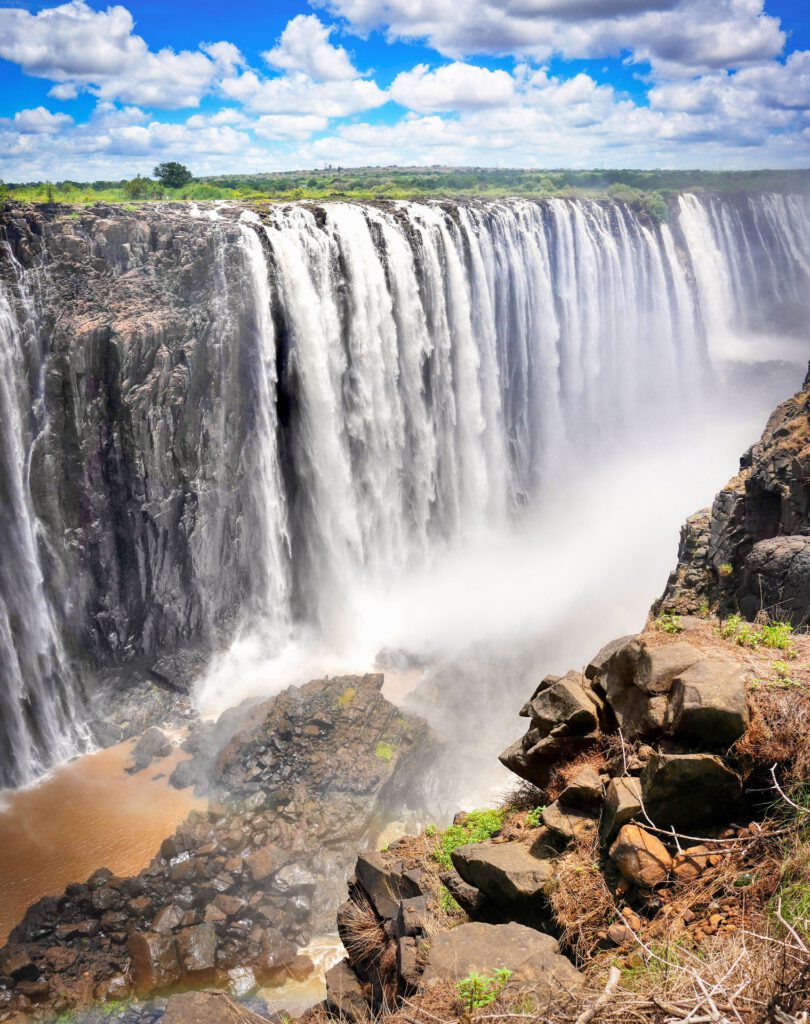
The Zambezi is Africa’s 4th largest river. It plummets 108m/ 354ft at the Victoria Falls which is a natural wonder of the world. It has 2 of Africa’s largest hydro-electric schemes along its course at Kariba (Zimbabwe & Zambia) and Kahora Bassa dam in Mozambique.
Lake Tanganyika is the 2nd deepest lake in the world and lies in the Great Rift Valley between Zambia, Tanzania, Burundi and the DRC. It holds 16% of the worlds available fresh water.
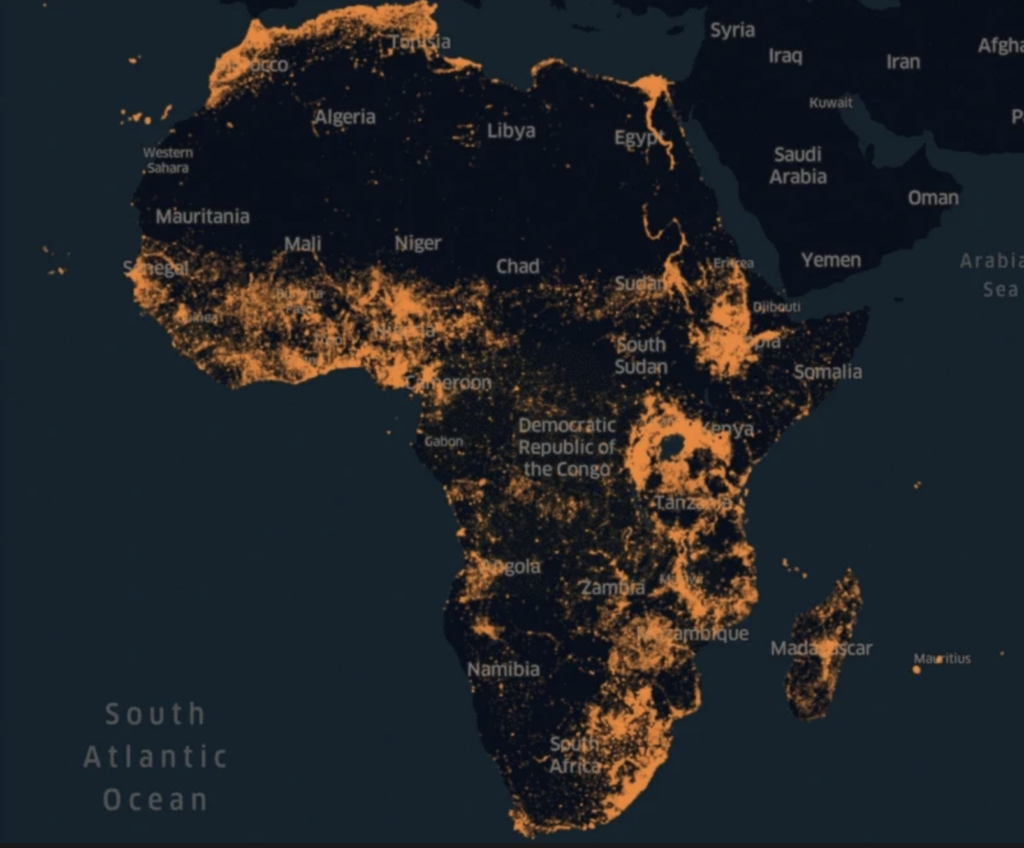
Africa has a population of about 1.37 billion people (2021), it is only 13% of the worlds total. It has an average population density of 65 persons/ mile2, which is below the world average of 105, and Asias 203 persons/ mile2.
There are 54 countries of which 15 are landlocked. The largest being Algeria, the Democratic Republic of Congo, and Sudan. Sudan used to be the largest country on the continent, until 2011, when the people of South Sudan gained independence, making it the worlds youngest country.

Mount Kilimanjaro in Tanzania is the highest peak in Africa at 5 895m/ 19 340 ft, and is the highest free standing mountain in the world. Mt Kenya’s Bation peak (5 199m) & Nelion peak (5 188m) are 2nd & 3rd highest respectively.
Africa’s economies account for just 3% of global GDP. The Continent is rich in minerals, and relies heavily on the export of Petroleum, gold, diamonds and other important minerals including chrome, platinum and manganese. Agriculture accounts for 33% of the continents GDP and almost 50% of its export revenues, but most foreign economic activity is in the exploitation of its abundant resources. Africa was Identified as the worlds poorest inhabited continent, and according to the world bank it is the worlds future economic growth engine. Returns on investments rarely dips below 10% which according to OPIC/DFC, offers the highest investment returns in the world.
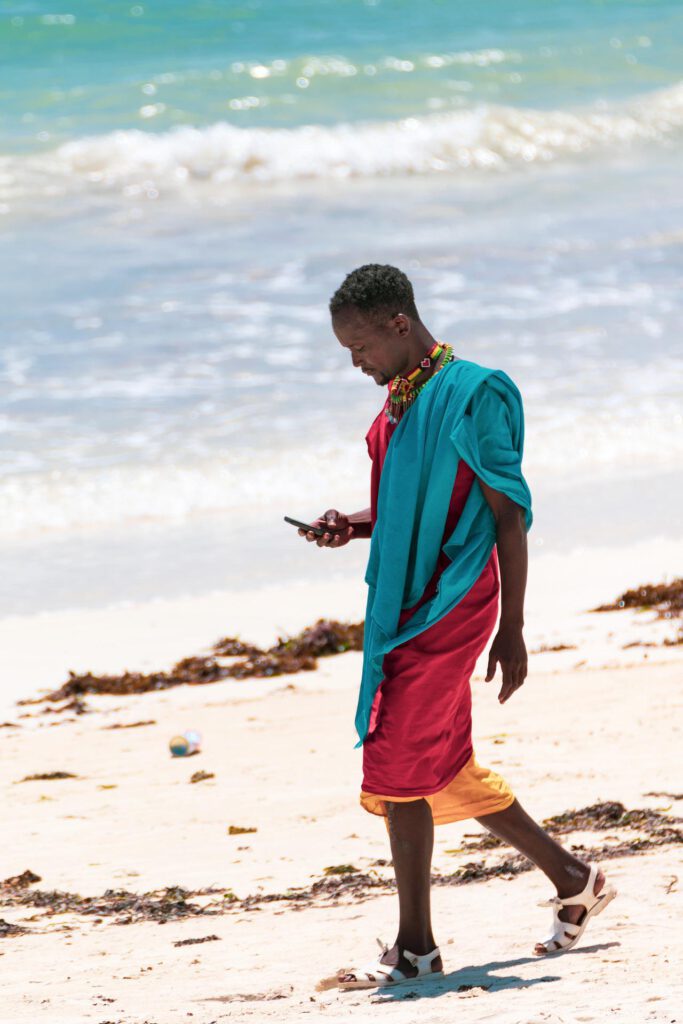
In 2012, 50% of African had a mobile phone. In 2022, still only 50% of Africans have mobile phones. According to the World Bank, there are 650 million mobile phone users, which surpasses the numbers in both the USA and Europe combined.
